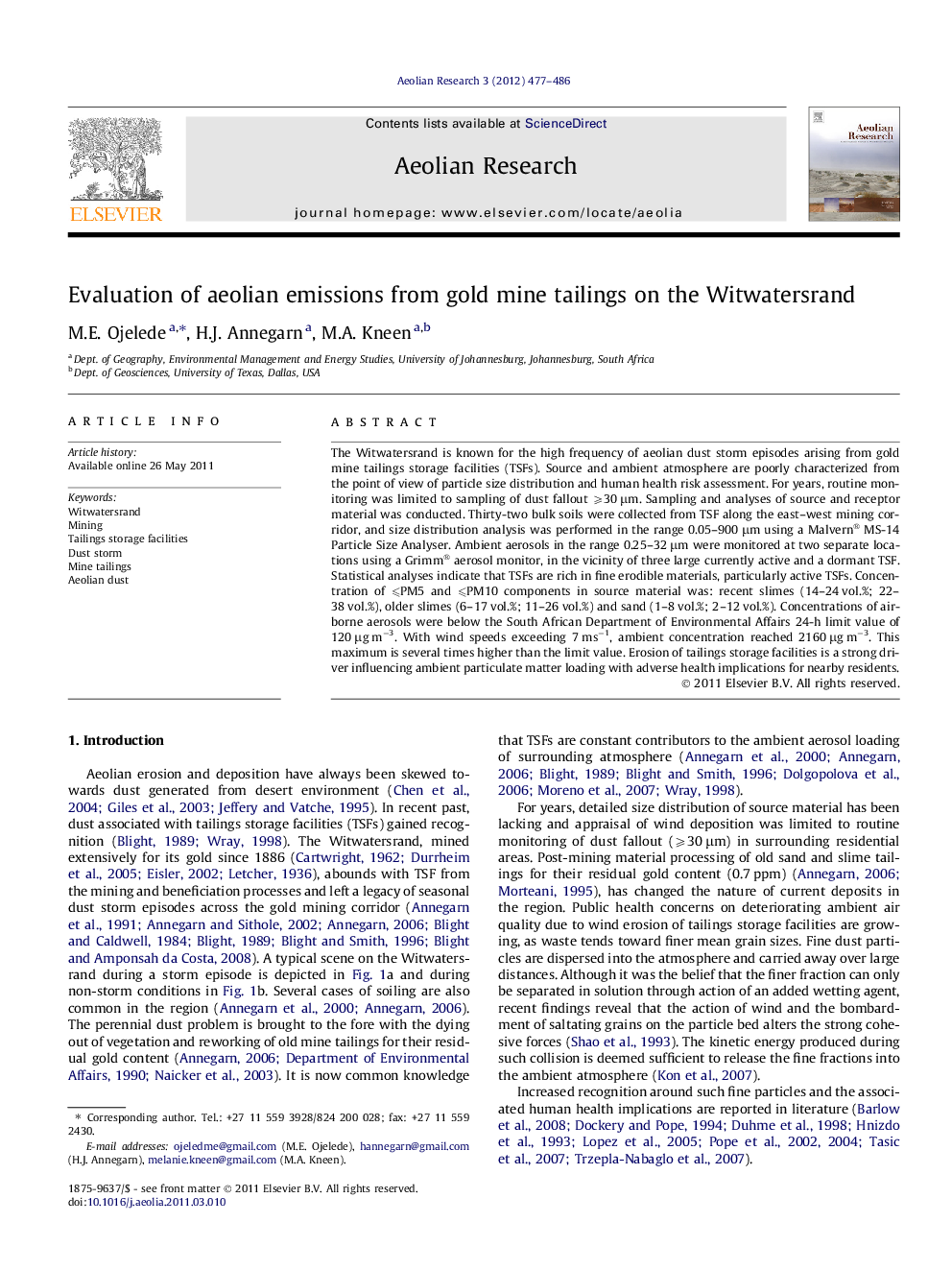| Article ID | Journal | Published Year | Pages | File Type |
|---|---|---|---|---|
| 4673941 | Aeolian Research | 2012 | 10 Pages |
The Witwatersrand is known for the high frequency of aeolian dust storm episodes arising from gold mine tailings storage facilities (TSFs). Source and ambient atmosphere are poorly characterized from the point of view of particle size distribution and human health risk assessment. For years, routine monitoring was limited to sampling of dust fallout ⩾30 μm. Sampling and analyses of source and receptor material was conducted. Thirty-two bulk soils were collected from TSF along the east–west mining corridor, and size distribution analysis was performed in the range 0.05–900 μm using a Malvern® MS-14 Particle Size Analyser. Ambient aerosols in the range 0.25–32 μm were monitored at two separate locations using a Grimm® aerosol monitor, in the vicinity of three large currently active and a dormant TSF. Statistical analyses indicate that TSFs are rich in fine erodible materials, particularly active TSFs. Concentration of ⩽PM5 and ⩽PM10 components in source material was: recent slimes (14–24 vol.%; 22–38 vol.%), older slimes (6–17 vol.%; 11–26 vol.%) and sand (1–8 vol.%; 2–12 vol.%). Concentrations of airborne aerosols were below the South African Department of Environmental Affairs 24-h limit value of 120 μg m−3. With wind speeds exceeding 7 ms−1, ambient concentration reached 2160 μg m−3. This maximum is several times higher than the limit value. Erosion of tailings storage facilities is a strong driver influencing ambient particulate matter loading with adverse health implications for nearby residents.
► TSF material contains respirable and thoracic aerosols. ► Respirable and thoracic aerosols are confirmed in receptor atmosphere. ► Erosion of TSFs exacerbates ambient particulate loading. ► Dust eroded from TSFs poses health risk to surrounding residents.
